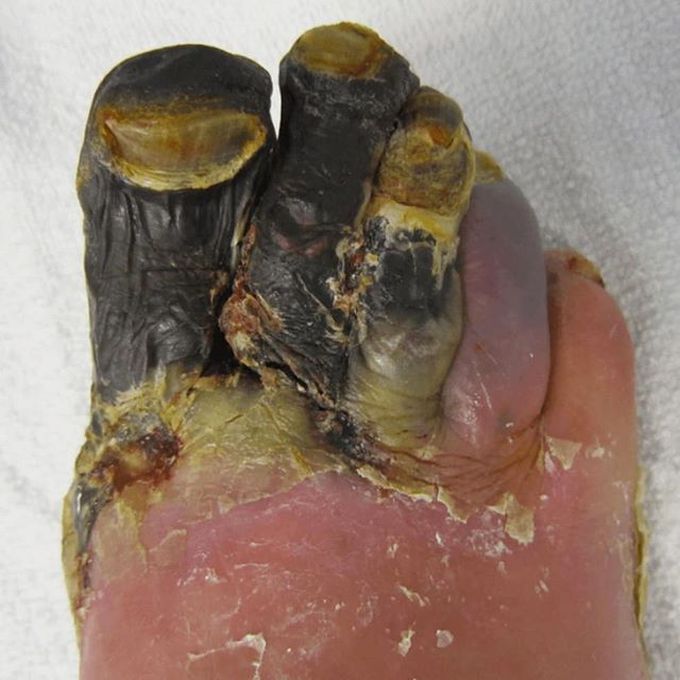


Dry gangrene affecting the toes
This is a case of dry gangrene affecting the toes as a result of a peripheral artery disease. Dry gangrene is a form of coagulative necrosis that develops in ischemic tissue, where the blood supply is inadequate to keep tissue viable. It is not a disease itself, but a symptom of other diseases. Dry gangrene is often due to peripheral artery disease, but can be due to acute limb ischemia. The limited oxygen in the ischemic limb limits putrefaction and bacteria fail to survive. The affected part is dry, shrunken and dark reddish-black. The line of separation usually brings about complete separation, with eventual falling off of the gangrenous tissue if it is not removed surgically, a process called autoamputation. Peripheral artery disease is a narrowing of the arteries. It most commonly affects the legs, but other arteries may also be involved. The classic symptom is leg pain when walking which resolves with rest, known as intermittent claudication. Other symptoms including skin ulcers, bluish skin, cold skin, or poor nail and hair growth may occur in the affected leg. Complications may include an infection or tissue deathwhich may require amputation.

